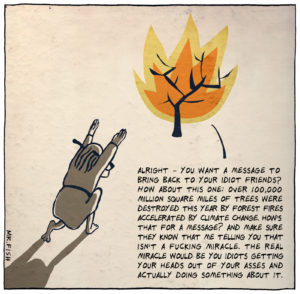The New Majority
As Virginia goes, so goes the Senate -- and the nation? The decision of former Virginia Gov. Mark Warner to run for the seat of retiring Republican Sen. John Warner is more than just bad news for the GOP.WASHINGTON — As Virginia goes, so goes the Senate — and the nation?
The decision of former Virginia Gov. Mark Warner to run for the seat of retiring Republican Sen. John Warner is more than just bad news for the GOP. It reflects fundamental shifts in the balance of political power in the country, the growing force and volatility of suburban voters, and the fact that the old red state-blue state maps are becoming obsolete.
Republicans have never had much chance to recapture the Senate in 2008, but Mark Warner’s bid and the decision of Sen. Chuck Hagel, R-Neb., to step down combined this week to make the difficult almost impossible.
If Bob Kerrey, Nebraska’s former Democratic senator, decides to go for Hagel’s seat, Republicans will have to defend two states they only recently regarded as bastions. And in Warner and Kerrey, Democrats would add two ideologically unpredictable voices.
The Republicans are in danger of being pushed into a Southern redoubt. Their increasingly narrow regional and demographic base bears a remarkable resemblance to the old areas of Democratic strength during the Republican heyday after the Civil War.
The GOP now controls both Senate seats in 17 states. Nine of these are in the South or border South, and four are in the inner West. (Three of the four states, Idaho, Wyoming and Utah, are about as solidly Republican as any in the country.) There are two states far outside the Republican comfort zone where the party holds both seats, Maine and New Hampshire. And in both, an incumbent faces a serious challenge from the Democrats next year.
Democrats have both seats in 18 states, including two where independents vote with them. Eight are on the East Coast and four are in the Midwest. But over the last two elections, they have begun an advance into what had been Republican territory, picking up Senate seats in Virginia, Montana, Ohio and Colorado. The map of the U.S. Senate is increasingly divergent from the patterns of those red-blue maps in President Bush’s two elections.
But trends within the states are as important as national geography. Outside the Deep South, Democrats are on the verge of becoming the dominant party in the suburbs and are pushing into the exurbs. In Virginia, that offensive was central to the Democratic victories of Gov. Tim Kaine in 2005 and Sen. Jim Webb in 2006. But the implications go beyond a single state.
Rep. Rahm Emanuel of Illinois, who headed the Democrats’ 2006 effort in the House elections, regularly reminds his colleagues that 16 of the 31 Democratic pickups were in suburban or exurban areas. He has been talking about a new “suburban populism” or “metropolitan populism” that he characterizes as “a revolt of the center.” The suburbs are changing demographically as more nonwhites move in, and many suburban voters are turned off by the ideological politics of the right, particularly the Christian Right.
One politician who shares Emanuel’s suburban obsession is Rep. Tom Davis. He happens to be one of the Republicans expected to seek John Warner’s seat in Virginia.
The former chairman of the Fairfax County Board of Supervisors in the suburbs outside of Washington, Davis has watched closely as the four big suburban and exurban counties in northern Virginia have drifted toward the Democrats. Davis — he is, with Emanuel, one of the House’s shrewdest electoral tacticians — warned his Republican colleagues before last year’s election that they faced a revolt among suburban moderates. He was right.
Yet at the very moment when Republicans need unity against Mark Warner, Davis could face an ideological showdown against former Gov. Jim Gilmore or, possibly, former Sen. George Allen, who narrowly lost to Webb last year. Both Gilmore and Allen are down-the-line social conservatives. This would give them an advantage in an internal party fight, but limit their general election appeal in the suburbs.
The outcome will determine whether Virginia Republicans define themselves as conservatives oriented toward the Deep South, or as middle-state moderate conservatives comfortable with the rise of suburban politics.
Mark Warner, who combines popularity in the suburbs with unusual strength in rural areas, clearly had his own version of Emanuel’s “revolt of the center” in mind when he announced his candidacy in a Web broadcast on Thursday. He spoke of voters who were “sick to death of the bickering” in Washington and promised a “practical problem-solving approach” and “a bipartisan approach of change.”
Safe, soothing, and very suburban: These could be the characteristics of the new American majority. For now, Democrats have the better understanding of its rhythms.
E.J. Dionne’s e-mail address is postchat(at)aol.com.
© 2007, Washington Post Writers Group
Your support matters…Independent journalism is under threat and overshadowed by heavily funded mainstream media.
You can help level the playing field. Become a member.
Your tax-deductible contribution keeps us digging beneath the headlines to give you thought-provoking, investigative reporting and analysis that unearths what's really happening- without compromise.
Give today to support our courageous, independent journalists.






You need to be a supporter to comment.
There are currently no responses to this article.
Be the first to respond.